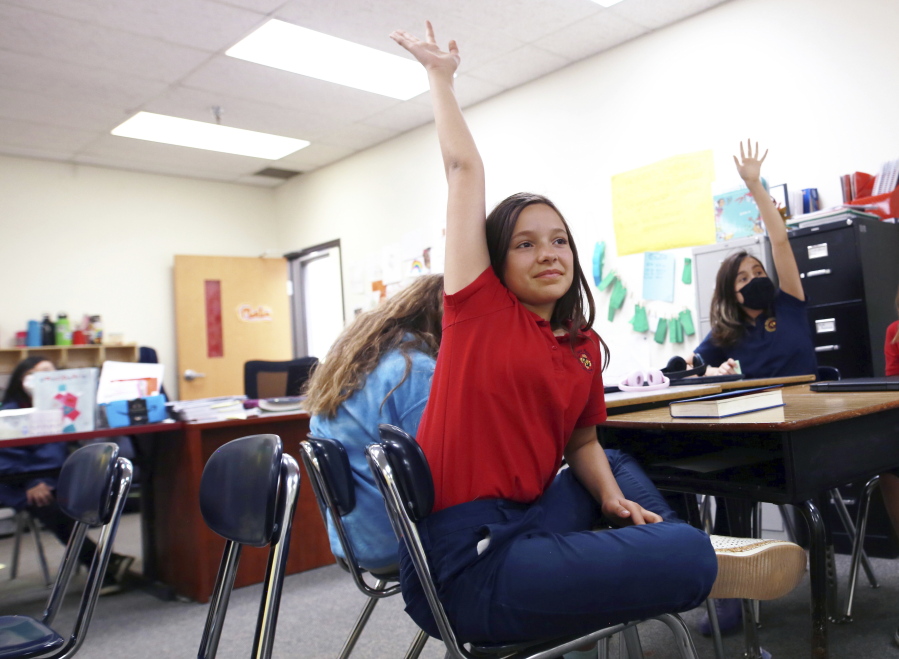ALBUQUERQUE, N.M. — Jacqueline Powell and her fourth grade classmates toiled over pencil and paper to write a letter in Spanish about what they did in class this year.
Powell explained the assignment in perfect Spanish before struggling to translate the words to end her sentence. The 10-year-old charter school student raised her forearms to her temples in a show of mental effort, making her large round glasses seesaw up and down.
That struggle, fought every week at the New Mexico International School in Albuquerque, has put her speaking ability far ahead of some of her high school peers. It has allowed her to speak in Spanish with her grandmother, who is from Chihuahua, Mexico, and she has fostered a secret language between her and her mom, whose husband and stepchildren can’t speak Spanish.
While dual language programs are offered in thousands of schools across the U.S., New Mexico is the only state where the right to learn in Spanish is laid out in the state constitution.
Dual language programs like the one at the New Mexico International School are championed by Hispanic parents who want their children to cultivate cultural roots. They are also seen by education experts as the best way for English learners to excel in K-12 schools.
The question for lawmakers in the nation’s most heavily Hispanic state is why New Mexico’s dual language programs aren’t being used by the students who most need them.
Legislative analysts are expected in the coming weeks to release a report that will highlight challenges facing dual language and other multicultural programs. It will include a look at decades-old trends such as a lack of oversight by education officials, declining participation and a reduction in the number of multicultural programs, Legislative Finance Committee spokesman Jon Courtney said.
The report also will acknowledge the lack of information about how well language programs are doing after two years without comprehensive academic testing due to the pandemic.
The number of dual language immersion programs has increased from 126 before the pandemic to 132 last year.
The New Mexico Public Education Department has started a series of forums for parents around the Hispanic Education Act, a state law that informs multicultural programs.
While there isn’t a consensus among educators as to how to best teach young children languages, a New Mexico court found in 2018 that well-run dual language programs are the “gold standard” for English learners.
The alternative, more popular in Arizona, is to separate children out for remedial instruction.
In New Mexico, English learners make up a larger share of dual language program participants. They comprise 63 percent of participants in the current school year, up from 53 percent last year.
At the New Mexico International School in Albuquerque, around half of the students are Hispanic, like Jacqueline, and reflective of the city’s population.
“It’s almost like a privilege type of experience to get your kid into these programs because it does take a lot of research,” said Mary Baldwin, 34, whose daughter attends the school.
“And then there’s so much shame that gets placed on the Spanish language or the culture itself,” she said. “Some families might not be aware that being bilingual is a huge strength not just culturally but also professionally.”



